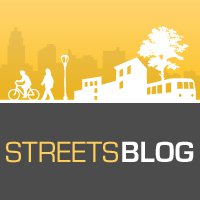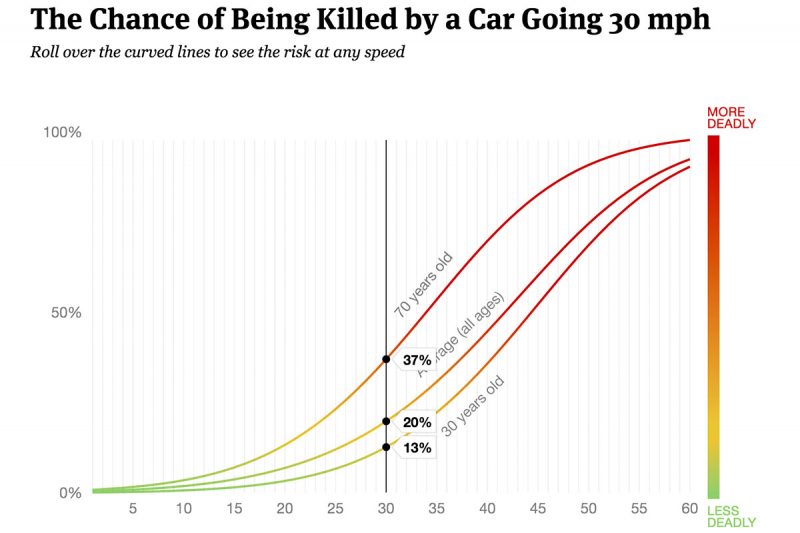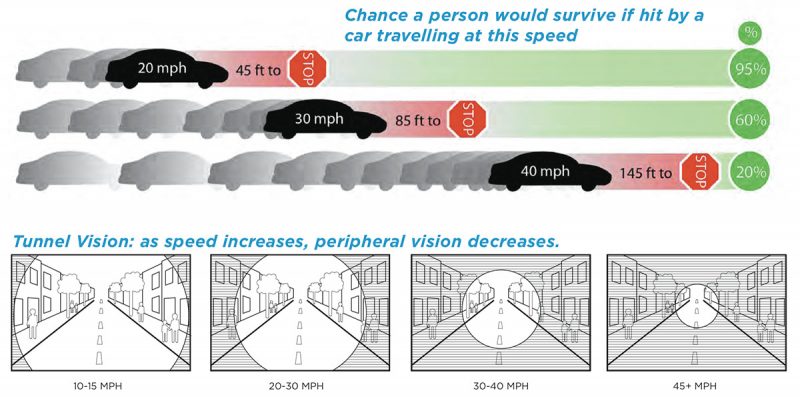 Speed kills, especially on city streets teeming with pedestrians and cyclists.
Speed kills, especially on city streets teeming with pedestrians and cyclists.
The investigative news nonprofit ProPublica has produced an interactive graph that deftly conveys how just a few miles per hour can spell the difference between life and death when a person is struck by a motorist. ProPublica’s Lena Groeger used data from the AAA Safety Foundation to chart the plummeting likelihood of survival as motorist speed increases.
The average pedestrian struck by a driver traveling at 20 mph has a 93 percent chance of surviving. For a 70-year-old, the chances are somewhat lower but still a robust 87 percent.
As Groeger puts it:
Once cars reach a certain speed (just above 20 mph), they rapidly become more deadly. According to [AAA’s Brian] Tefft’s data, a person is about 70 percent more likely to be killed if they’re struck by a vehicle traveling at 30 mph versus 25 mph.
In collisions at 30 miles per hour, about one in five pedestrians will not survive. For older pedestrians, the odds are significantly worse:

The risk of death continues to rise dramatically as speeds exceed 30 mph. At 40 mph, most older pedestrians will not survive:

In addition to much higher survival rates in the event of a collision, driving at slower speeds reduces stopping distances, making it easier for drivers to avoid hitting people in the first place.
 These graphs are a compelling visualization of the data that undergirds campaigns like “20’s Plenty” in the U.K., where residents have demanded 20mph streets to protect the most vulnerable. As of last fall, more than 14 million people in the U.K. lived on streets with 20 mph speed limits, according to 20’s Plenty founder Rod King, and the campaign is now focused on extending the 20mph limit to most streets in the country:
These graphs are a compelling visualization of the data that undergirds campaigns like “20’s Plenty” in the U.K., where residents have demanded 20mph streets to protect the most vulnerable. As of last fall, more than 14 million people in the U.K. lived on streets with 20 mph speed limits, according to 20’s Plenty founder Rod King, and the campaign is now focused on extending the 20mph limit to most streets in the country:
[Editor’s Note: This article has been cross-published from our partner, Streetsblog.]



The “tunnel vision” series of images shows a very good reason for NOT having edge-of-road bike lanes. Of the “hit from behind” cyclist-involved crashes, about half happened when the cyclist was either using a road shoulder or a bike lane.